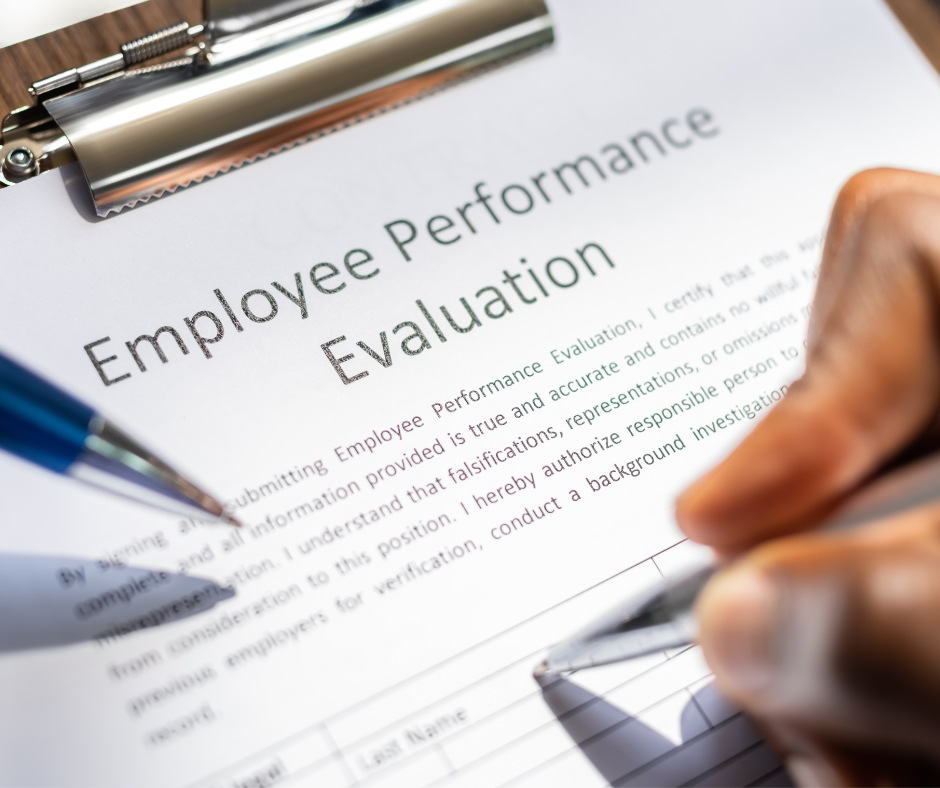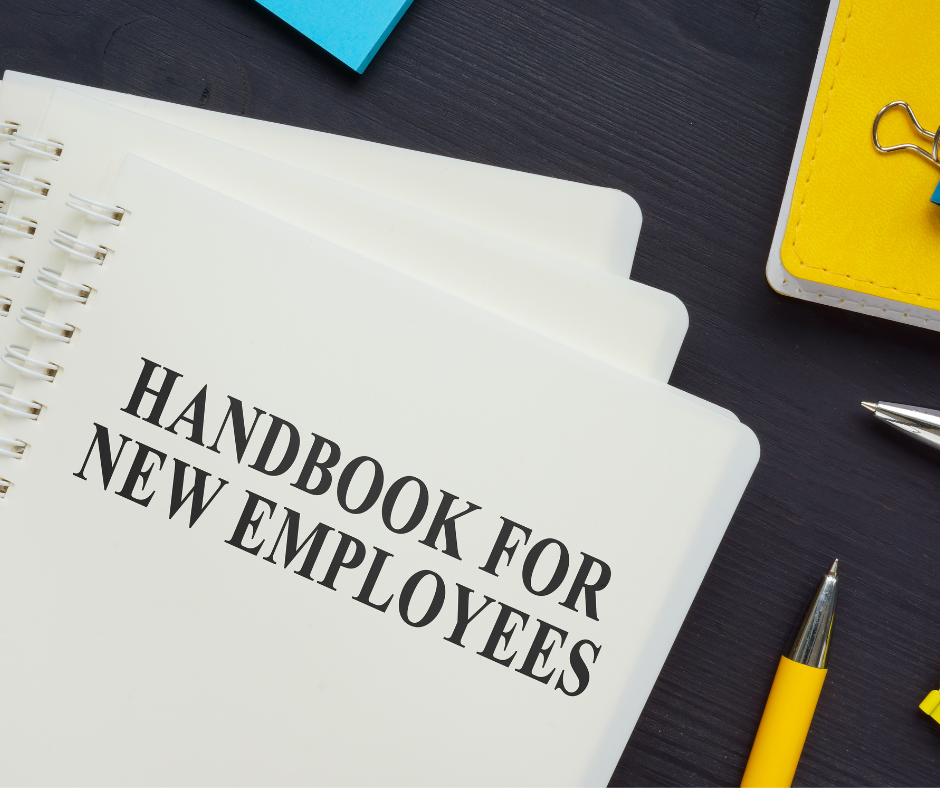
Key Takeaway:
- Employee handbooks play a crucial role in leisure and hospitality industries as they help set clear expectations, establish company culture, and reduce legal risks.
- An effective employee handbook should cover the company’s mission, values, and policies, such as those related to benefits, compensation, performance, conduct, safety, and security.
- To write an effective employee handbook, it’s essential to understand your company’s specific needs, use clear language, and keep it up-to-date with any changes in laws or policies.
Are you an employer in the Performing Arts, Spectator Sports, or Related Industries? You need to know the importance of an employee handbook. This blog will provide insights on the essential components and best practices for creating an effective handbook.

Importance of Employee Handbooks for Performing Arts, Spectator Sports, and Related Industries companies
Employee Handbooks are crucial for businesses in the Performing Arts, Spectator Sports, and Related Industries. These handbooks provide essential company policies, procedures, and guidelines for employees, creating a uniform work environment. They also promote consistent communication, reduce liability risks, and minimize misunderstandings between the employer and employee. Furthermore, Employee Handbooks ensure that employees have a clear understanding of the organization’s mission, values, and expectations. It covers basic employment terms and conditions, including but not limited to, benefits, working hours, job descriptions, roles, and responsibilities. Moreover, Employee Handbooks for Personal and Laundry Services companies provide unique features that cater to the company’s specific needs. These include topics such as dress codes, grooming requirements, scheduling, and client care. Incorporating and following Employee Handbooks can improve company culture and employee engagement. Failure to adhere to these policies can lead to consequences such as disciplinary actions, termination, and legal consequences. Companies must ensure that all employees are aware of the handbook’s existence and receive a copy.

Contents of an Effective Employee Handbook
Creating an employee handbook for your performing arts, spectator sports, and related industries company? You need to cover all the bases! To ensure a smooth onboarding process and address employee grievances, you must have a comprehensive handbook. This section will discuss what needs to be included. Such as:
- The company’s introduction
- Culture
- Policies and procedures
- Compensation and benefits
- Expectations of performance and conduct
- Safety and security policies
Introduction and Company Culture
Introducing New Hires to Organizational Ethos New hires are an essential part of the workforce, and as such, organizations ought to introduce them to the company’s culture, beliefs and practices. A well-drafted employee handbook is a vital tool in providing new hire education on organizational ethos. The handbook should contain policies regarding hiring, training, work schedules, dress code, benefits and an overview of the company’s vision and mission. Providing Transparency on Company Policies In addition to introducing new hires to organizational ethos, employee handbooks play a crucial role in guaranteeing transparency and consistency across all departments. Effective handbooks establishment of standardized rules and policies governing employee behavior. Moreover, the handbooks provide insight into disciplinary procedures for policy violation. Clear communication of these policies fosters trust between employees and management. If you are working in internet publishing and broadcasting companies, you can check out some useful tips on creating employee handbooks on employee handbooks for internet publishing and broadcasting companies. Details Not Covered In Other Sections Employee handbooks also serve as legal documents outlining compliance with employment laws enacted by state or federal agencies. They must have clearly outlined procedures for reporting harassment or discrimination within the workplace. Besides legal requirements, including a section that highlights ways employees can engage in their respective fields’ professional growth creates opportunities for advancement. Fear Of Missing Out (FOMO) Companies that overlook formulating relevant employee handbooks risk creating chaos when it comes to managing their human resources. In some cases, lack of such guides can result in costly lawsuits due to compliance issues with labor laws or discriminatory practices. Therefore companies need effective employee handbooks to avoid losing key personnel enticed by more organized workplaces offering better job security which negatively impacts growth prospects. Get ready to follow more rules than a middle-schooler in detention with these employee policies and procedures.
Employee Policies and Procedures
Setting clear rules and regulations is essential for any business. Companies operating in the performing arts, spectator sports, and related industries must establish a comprehensive set of guidelines that govern their workforce’s behavior. This can include company policies, HR procedures, employee conduct standards, and other legal documents that regulate workplace interactions. Through employee policies and procedures, businesses can ensure that their employees are aware of company expectations regarding performance standards and ethics while guaranteeing a consistent approach to labor relations. Employee handbooks can help the organization provide a safe and harassment-free work environment, adhere to employment laws, maintain confidentiality around sensitive information, address workplace grievances effectively. Additionally, they can outline benefit plans such as health care coverage or retirement savings options. It is crucial to create unique policies tailored to your specific industry that goes beyond what is required by law. For instance, providing safety guidelines for artistic performers or stipulating time-off requirements for traveling sports teams can go a long way toward promoting staff satisfaction and retention rates. Check out this guide on creating effective employee handbooks for amusement, gambling, and recreation industries companies for more tips and insights. According to SHRM’s survey[1], 90% of companies have an employee handbook. Therefore it is critical to develop employee handbooks considering business context and industry regulations. If you’re not happy with your benefits and compensation, don’t worry, there’s always community theater. [1] Society for Human Resource Management Survey Research Report: Employee Handbook Survey, July 11th, 2018
Benefits and Compensation
The employee handbook provides vital information on the benefits and remuneration for staff members. Here are some crucial points about employee benefits and compensation:
- Compensation policies and structures
- Benefits including pension schemes, healthcare, life insurance and disability insurance
- Performance-based incentive plans
- Tuition reimbursement or training benefits
- Leave policies including PTO (Paid Time Off), vacation, holidays and illness absence policies
- Bonus or Stock option plans if applicable
It is worth noting that companies in performing arts, spectator sports, and related industries may have additional benefits or compensation policies specific to their field. Nonetheless, it is essential to go through the complete handbook carefully for a comprehensive understanding of all benefits and remuneration. Check out this helpful guide on employee handbooks for professional, scientific, and technical services companies for more information. Interestingly, some past research indicates the positive impact of fair pay rates on employees’ satisfaction, productivity, job retention and reduction in absenteeism. Organizations should consider this vital aspect while structuring their benefit programs as Happy employees are relatively more productive in achieving company goals than disgruntled ones. Check out this useful resource on creating employee handbooks for arts, entertainment, and recreation companies to ensure your policies and benefits are in line with industry standards. Additionally, ensuring that the pay rates match industry standards remains critical to retaining talented employees. By doing so, businesses can create a strong Employer brand reputation resulting in more top talent knocking on their doors. Better bring your A-game to work because mediocre performance and bad conduct won’t be the ticket to success in this company.
Performance and Conduct Expectations
When it comes to ensuring optimal performance and behavior of employees in the performing arts, spectator sports, and related industries, it’s crucial to establish clear expectations. This includes outlining standards for punctuality, attendance, dress code, communication, teamwork, and compliance with industry-specific regulations. By providing an explicit framework within which employees should operate, employers can minimize confusion and reduce the risk of non-compliance or other negative outcomes associated with breaches of conduct. To ensure that these expectations are properly communicated to all employees and consistently upheld over time, it’s recommended that they be presented clearly in the employee handbook. Examples could include policies regarding acceptable language use or drug/alcohol consumption on the job site. Additionally, guidelines on safety equipment usage and emergency protocol might be necessary depending on the specifics of a particular workplace. One important aspect to consider is how to communicate these policies in a way that is clear and approachable. Rather than adopting a strict or overly formal tone for all policy communications, companies should aim to contextualize them in ways that are easy for employees to understand while still maintaining professionalism. For instance, using stories from past events at the company can help illustrate why particular conduct guidelines were implemented. Research has found that implementing clear procedures around personnel policies improves overall productivity by streamlining information-sharing between different departments (Conescolearning.com). Therefore it is imperative for information companies operating in this space to develop comprehensive employee handbooks with clear expectations around performance and conduct behaviors. Because nothing says ‘safe and secure’ like having to sign a waiver just to use the coffee machine in the break room.
Safety and Security Policies
Ensuring the safety and security of employees is of utmost importance in industries such as performing arts, spectator sports, and related fields. It is essential to have policies regarding safety measures to create a hazard-free environment for both employees and customers. A well-documented policy should cover all aspects of safety and security that can arise in the workplace. For example, it should include information on procedures for handling emergencies, dealing with hazardous materials, fire evacuation plans, and crime prevention strategies. The employee handbook must have clear instructions on who to contact in case of an emergency or an unsafe situation. One needs to train workers on how to make the best use of personal protective equipment (PPE). Also, it is necessary to carry out regular risk assessments and update them regularly. Pro Tip: A handbook’s effectiveness relies significantly on its readability and accessibility. Utilizing tables, bullet points, headings, font size/type will increase its usability while making it easy to comprehend key information.
Writing an effective employee handbook is like a dance, you need to make sure you have all the right steps and don’t step on any toes.

Tips for Writing an Effective Employee Handbook
Craft your employee handbook with care. Consider your company’s unique needs and culture. Keep language clear and concise. Update regularly for accuracy. This will guarantee your handbook reflects the organization’s policies and procedures. Plus, it gives employees essential info.
Understand Your Company’s Needs and Culture
Understanding your company’s values and beliefs is crucial for creating an effective employee handbook in the performing arts, spectator sports, and related industries. Incorporating these aspects into your handbook provides employees with a clear understanding of what the company stands for, expectations and policies. Integrating your organization s culture promotes building a positive working environment that aligns with your vision. Identifying several key factors like communication protocols, dress codes especially for frontline workers create a comfortable atmosphere making it easier to manage and reinforce behavioral standards.
Furthermore, it is beneficial to involve multiple departments or representatives to gain different perspectives. This alignment technique not only ensures the inclusivity of policies but also secures employees’ buy-ins with adherence to such guidelines. Through this collaboration process, it’s possible to create comprehensive manuals that offer clarity for any work situation from contractual agreements, deadlines to absence/punctuality provisions. Pro Tip: Avoid using technical language or uncommon industry terms that may cause confusion/ambiguity among employees while developing a handbook. Say it like you mean it: Clear and concise language in your employee handbook will prevent any confusion, unlike that one time you tried to explain the plot of Inception to your grandma.
Use Clear and Concise Language
Using simple language, precise words, and avoiding technical jargon helps communicate the rules and policies in an employee handbook effectively. The language should be easy to understand by all employees, reducing confusion and misunderstanding. Ensure that the sentences are straightforward, grammatically correct, and free of redundancies. Avoid using acronyms or abbreviations unless necessary to avoid confusion among employees. Using plain language is crucial in industries such as performing arts, spectator sports, and related fields where individuals may not have a formal education background in legal jargon or administrative procedures. Communicating clearly in the employee handbook encourages transparency between employees and the organization. It is vital to keep updating the employee handbook’s language periodically as laws change to keep it relevant. Keeping consistent messaging throughout the handbook ensures awareness of company culture. For companies in the Management of Companies and Enterprises industry, having well-written employee handbooks is a must for effective management. In one instance, an employee misunderstood a protocol due to poor wording on a restaurant’s dress code policy resulting in embarrassment for both parties involved. Properly crafted language could have prevented this misunderstanding altogether.
Don’t let your handbook gather dust like a forgotten prop. Keep it fresh and updated, because outdated policies are about as useful as a kazoo in a symphony orchestra.
Update Your Handbook Regularly
An updated employee handbook ensures that employees are aware of new policies and guidelines. Regular updates to your company’s handbook can help reduce legal risks and maintain a positive work environment. Ensure that all changes to policies, procedures, benefits, and state and federal laws are incorporated into the handbook. It is crucial to distribute the updated handbook digitally or in print to all employees and have them sign an acknowledgement form indicating their consent. Also, make sure that the current version is easily accessible to all employees. Consider using plain language instead of technical jargon while writing the handbook so that all employees can understand it. Remember to update your employee handbook regularly as policies change or new ones are introduced. It is a good idea to review your employee handbook annually for compliance with state and federal labor laws.
Updating your employee handbook serves multiple purposes such as reducing legal risks, improving communication with employees, providing clarity on policies and procedures among others.
At my previous organization, an outdated employee handbook led to confusion among employees around policies related to parental leave. This confusion resulted in a drop in employee satisfaction levels. Updating the employee handbook helped clarify the policy details and reduce confusion among employees in publishing industries (except internet) companies.
Five Facts About Employee Handbooks for Performing Arts, Spectator Sports, and Related Industries Companies:
- Employee handbooks provide important information about company policies, procedures, and expectations. (Source: BambooHR)
- Employee handbooks in the performing arts and spectator sports industries may include specific guidelines for performers, coaches, and other personnel. (Source: HR Technologist)
- Employee handbooks may also include information related to safety, security, and emergency preparedness. Broadcasting companies (except internet ones) specifically, can find useful tips on making their employee handbooks in this guide to employee handbooks for broadcasting companies.(Source: Society for Human Resource Management)
- Employee handbooks may be updated periodically to reflect changes in company policies, laws, or regulations. (Source: HR Dive)
- Employee handbooks can serve as a valuable tool for onboarding new employees and promoting a positive company culture. (Source: The Balance Careers)
If you are looking for employee handbooks for telecommunications companies, visit Airmason’s blog for comprehensive resources.
FAQs about Employee Handbooks For Performing Arts, Spectator Sports, And Related Industries Companies
1. What is an Employee Handbook for Performing Arts, Spectator Sports, and Related Industries companies?
An employee handbook for performing arts, spectator sports, and related industries companies is a document that outlines the policies, procedures, and expectations of employees in the workplace. For companies in the Performing Arts, Spectator Sports, and Related Industries, this handbook includes information specific to the industry, such as dress codes, safety protocols, and training requirements.
2. Why is an Employee Handbook important for my company?
Having an employee handbook ensures consistency in the workplace and sets clear expectations for employees. It can also protect the company from legal disputes by outlining policies and procedures in advance. Additionally, it serves as a valuable resource for employees by providing answers to frequently asked questions.
3. What should be included in an Employee Handbook for Performing Arts, Spectator Sports, and Related Industries companies?
An employee handbook for performing arts, spectator sports, and related industries companies should include relevant information such as policies around ticketing, sponsorship, and merchandise, safety procedures for performers and audience members, and dress codes for employees. It should also cover general topics such as compensation, benefits, and disciplinary procedures.
4. How often should an Employee Handbook be updated?
An employee handbook should be updated at least once a year to ensure that it reflects any changes in company policies or regulations. It’s also a good idea to review and update it as necessary whenever there are any major changes to the company.
5. Can an employee be terminated if they violate policies outlined in the Employee Handbook?
Yes. An employee can be terminated if they violate policies outlined in the employee handbook. However, it’s important to ensure that all policies are communicated clearly to employees and that the violation is significant enough to warrant termination.
6. How can I ensure that my Employee Handbook is legally compliant?
It’s important to review your employee handbook with legal counsel or an HR professional to ensure that it complies with all applicable laws and regulations. It’s also a good idea to have employees sign an acknowledgement that they have received and read the handbook to demonstrate that they are aware of its contents.